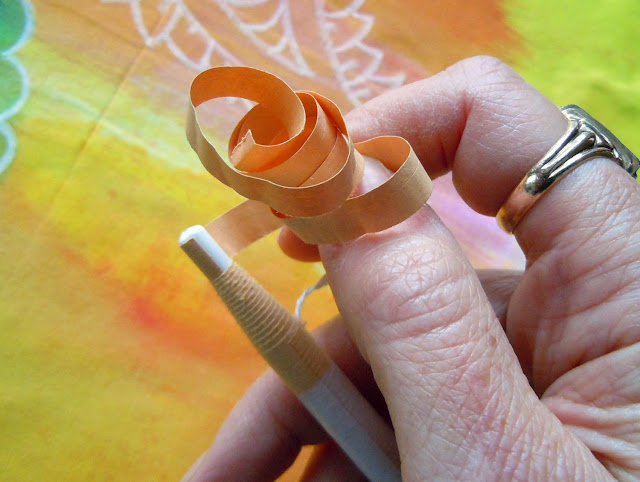
I wanted to give you the heads up that there are just a few days left to buy this limited edition thermofax screen Florabunda, sale ends May 31st.
The image on the screen is approximately 9" x 6" and sells for $13.
This image was printed with textile paint on tan colored hand dyed fabric.
This is a recent piece I made using this thermofax screen. I know I'll be getting a lot of use from this design.
Copyright seems to be on everyones mind these days and I want to assure you, you are free to use this image in any way on your work. You could use it to create a fabric and cut it up to make art or items to sell. Use it like you would a store bought stencil. The only way I would not want to see this image used, is printed alone on an object (t-shirt, bag, etc) and sold as your own design, that would just be a bad karma thing to do.
I printed these with black textile paint on hand dyed fabric.
I printed these with black textile paint on hand dyed fabric.
The one below on the left is a piece of rust dyed organza that I put on top of the hand dyed fabric on the right and printed both at once with brown textile paint.
 Then I tried out some clear DeColourant to screen some hand dyed fabric. I love what a crisp image it gives. The slightly gelatinous consistency of DeColourant makes it perfect for screening.
Then I tried out some clear DeColourant to screen some hand dyed fabric. I love what a crisp image it gives. The slightly gelatinous consistency of DeColourant makes it perfect for screening.
Just incase you are unfamiliar with this product, DeColourant removes color from fabric. Apply it to fabric (brush, screen or stamp), let it dry and then use a hot iron with steam to activate the discharging proces. If you want to know more about using DeColourant, I wrote an article for Quilting Arts magazine Feb/Mar 2012.
You can also get DeColourant in colors so it removes the dye from the fabric and puts a new color in at the same time. For the examples below I used yellow DeColourant on a hand dye and commercial batik.
If you would like to buy a Floribunda thermofax screen to adorn your work, please check out Lynn's Etsy Shop. Lynn also has a DVD with everything you want to know about using thermofaxes to design and create textile art.


















































